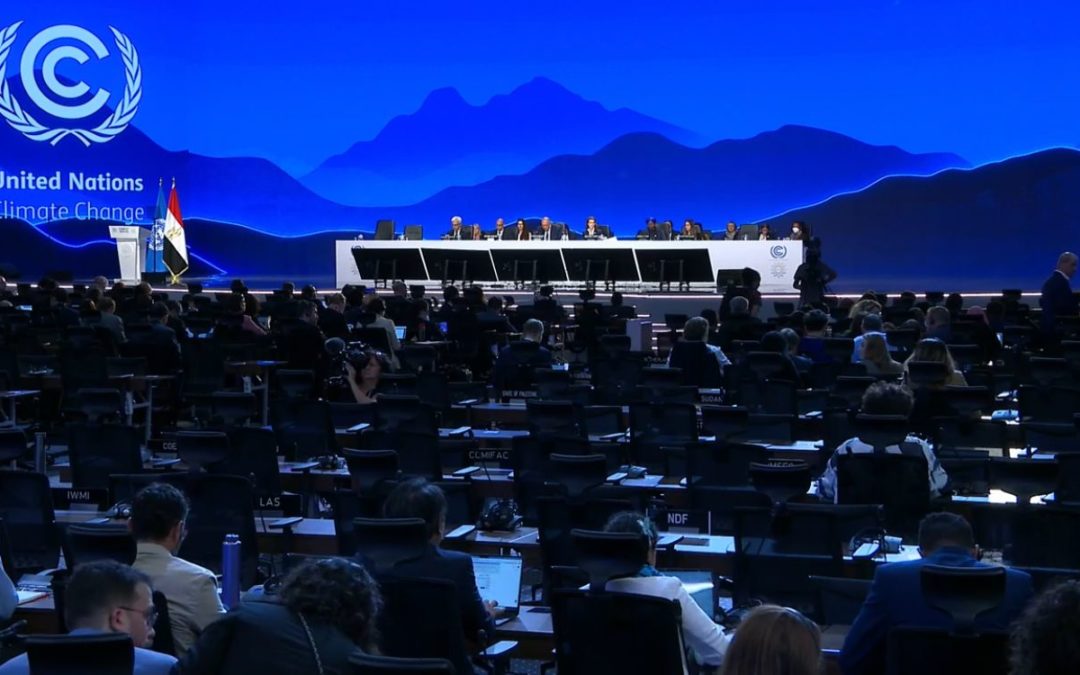The European Commission has long been preparing and feeding information to the public on its new climate instrument to even the international trade playing field for European companies, the so-called Carbon Border Adjustment Mechanism (CBAM). After the proposal has been leaked to the press lately, the Green Policy Center had a look at the text to see what it could mean to the CEE region.
In order to reach the raised climate ambition of the European Union, namely cutting the bloc’s greenhouse gas emission by at least 55 per cent by 2030, the European Commission has been working on its new Fit for 55 Package with 12 different pieces of legislation for some time now. One of these measures is the Carbon Border Adjustment Mechanism (CBAM), which has caused a lot of interest and upheaval among the international trading partners of the EU due to its suspected market protection effects. Since the Commission proposal has been leaked recently, we can have a better understanding of what it could mean for the CEE region.
One could argue that the CBAM is exactly the measure the region has long been asking for. The CEE EU Member States have been bantering all previous proposals to raise EU climate ambitions that they would harm the competitiveness of EU companies against third countries with less stringent climate regulations. The very aim of the CBAM is to provide an even playing field for EU companies and their third-country competitors by imposing a carbon price on the EU border for certain imported products equalling the all-time EU price on pollution. It would mirror the EU Emission Trading System (EU ETS), so importers of the selected carbon-intensive goods would pay a similar carbon price as if they were covered by the EU ETS.
This new measure would then make the selected imported carbon-intensive products just as expensive as domestic ones, making the local businesses competitive and keeping them from relocating their production outside of the EU climate policies. On the other hand, this could also incentivise the third-party producers and governments to make their production less carbon-intensive in order to access and compete in the world’s largest common market. The CBAM would also raise significant revenues, between 5-14 billion euro according to the estimates of the Commission. The raised money would then finance climate protection measures.
In theory, this is a sound concept and can become an important and effective tool in the arsenal of the future EU international climate policy. Then how come almost all of the international trading partners of the EU are loudly protesting against the CBAM proposal of the Commission? Other major economies are seeing the CBAM as a protectionist measure to support EU companies and a custom duty to raise additional revenues, which could be against the rules of the World Trade Organisation. The Commission is arguing against this assumption, recalling the CBAM’s original intentions of environment protection.
However, currently, several sectors receive free allocation of emission units under the EU ETS, making the CBAM incompatible with WTO rules. The recently leaked Commission proposal on the reform of the EU ETS is trying to address this issue since the paper tells that sectors covered by the CBAM should not receive a free allocation, however, it does not define when this free allocation should be phased out. Phasing out these free allowances has already long been debated in the EU, so we can expect some heated discussions even more since the companies of CEE Member States are also receiving these. Regarding the custom duty aspects, a recent paper has highlighted that it could hit developing countries’ economies hard. A solution here could be to allocate the revenues of the CBAM to support just transition in these countries.

According to the leaked paper, the first targeted sectors of the CBAM would be the steel, iron, cement, fertilisers, aluminium and electricity generation industries. It would also not only focus on the direct emissions caused by the production of goods, but also on the indirect emissions such as the electricity consumed by the production itself. The draft also discusses how should the emission calculating methods be used and sets up a new authority where foreign producers have to report to. The importers would also be required to buy emission certificates, somewhat similar to the EU ETS system. According to the document, the CBAM would be introduced in 2023 and would be up and running by 2026.
Because of the sectors targeted by the CBAM, the most affected would be the immediate neighbours of the EU, mostly who already have undertaken some integration steps, like being a Contracting Party of the Energy Community (an international organisation dedicated to integrating the EU neighbours to the common EU energy system) or having signed association agreements. Since Member States in the region, like Greece, Croatia, Romania and Hungary are importing more and more dirty energy from the neighbourhood, including the electricity sector in the CBAM proposal makes sense. However, it is important to note that in order to effectively stop carbon leakage in the sector, extending the EU ETS to the imminent neighbourhood would be more reasonable, since it would cut emissions in these countries more effectively, according to a recent study. Several neighbouring countries, such as Ukraine or Montenegro have already embarked on this journey, therefore supporting them in this initiative would also be in the interest of the CEE region.
To solve the above-mentioned challenges, the Commission still has a bumpy road ahead. However, during a recent event, Frans Timmermans, Executive Vice-President of the European Commission responsible for the European Green Deal has stated that the EU will discuss with partners what kind of measure (like regulation or taxation) they can use to lower their emissions in order to escape falling under CBAM, as long as they share the same goal as the EU, namely climate neutrality by 2050.




